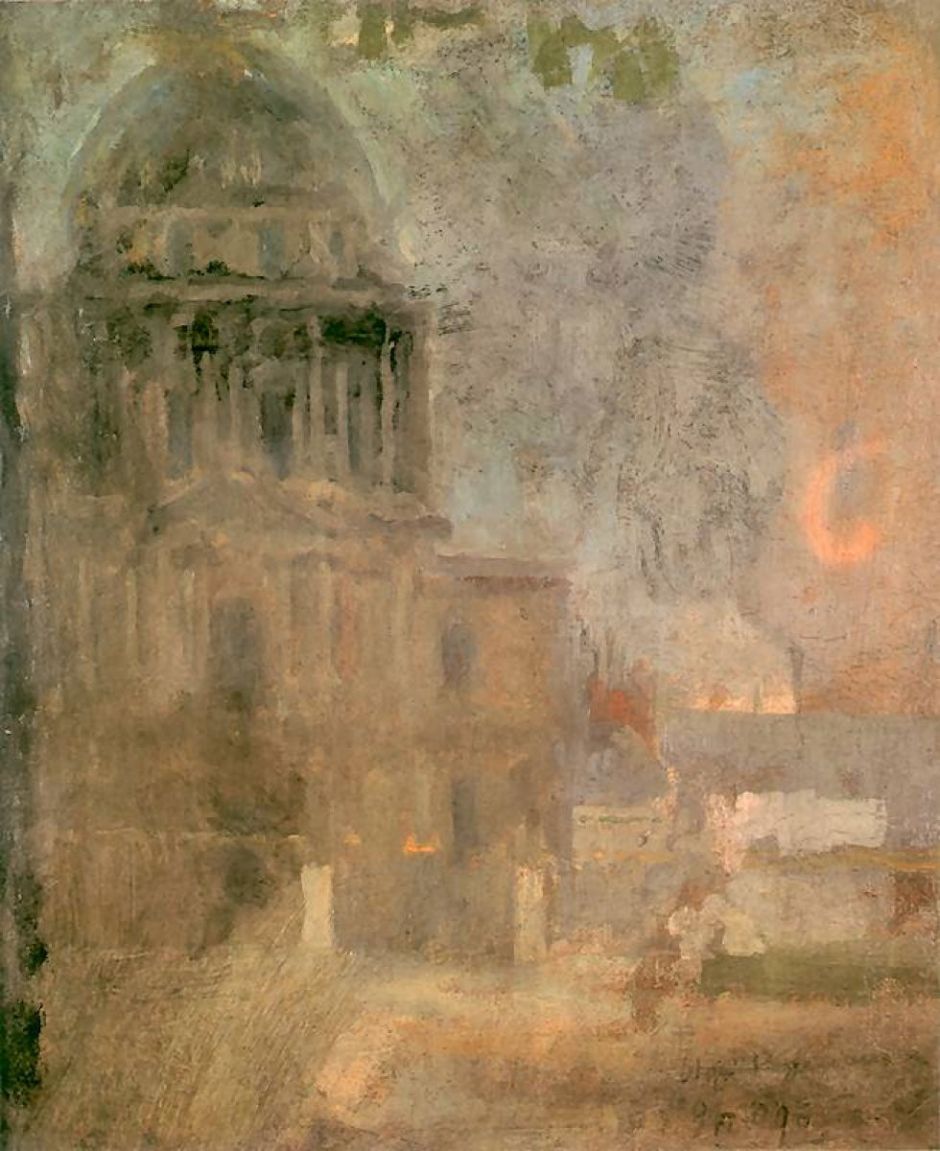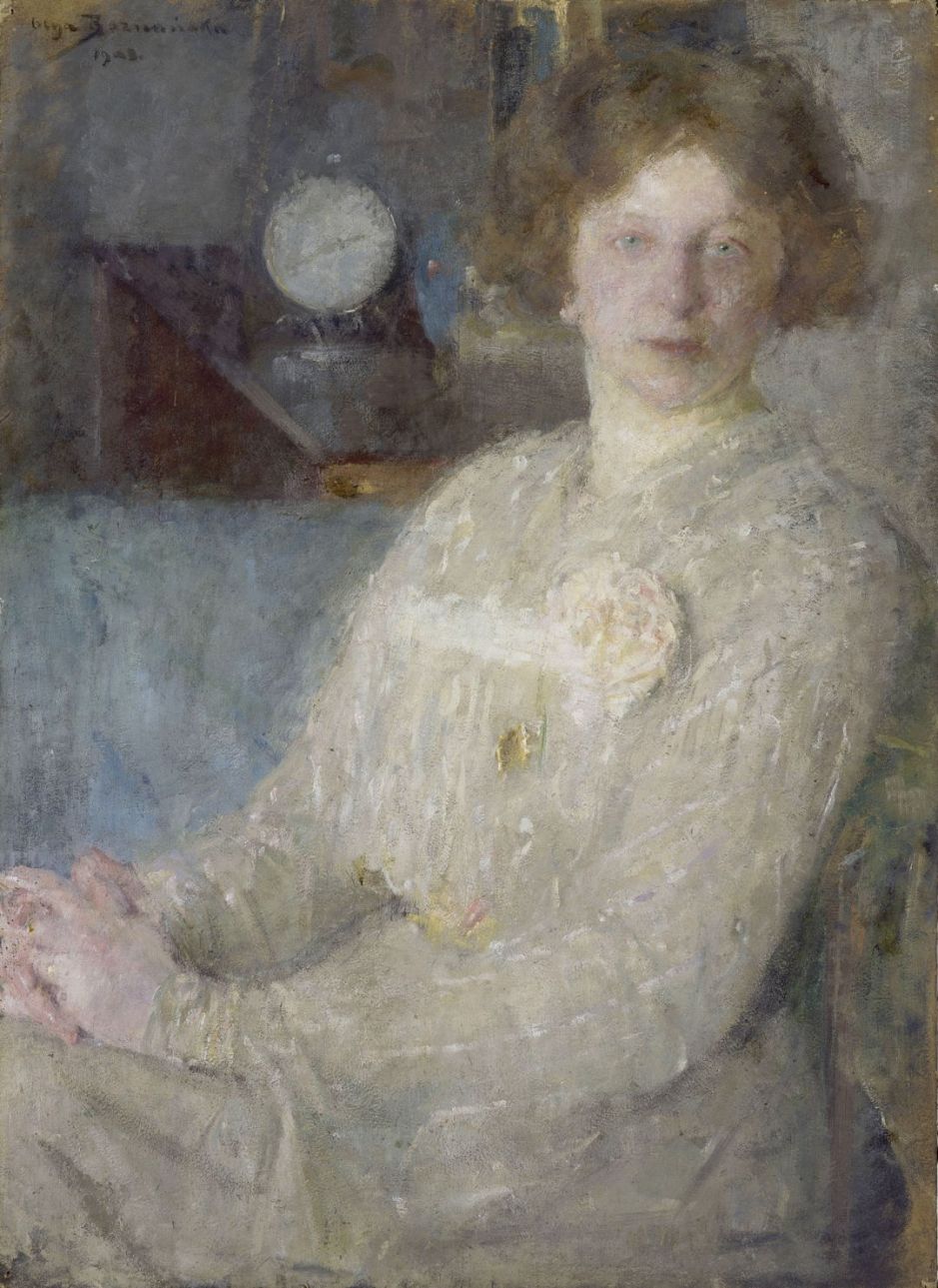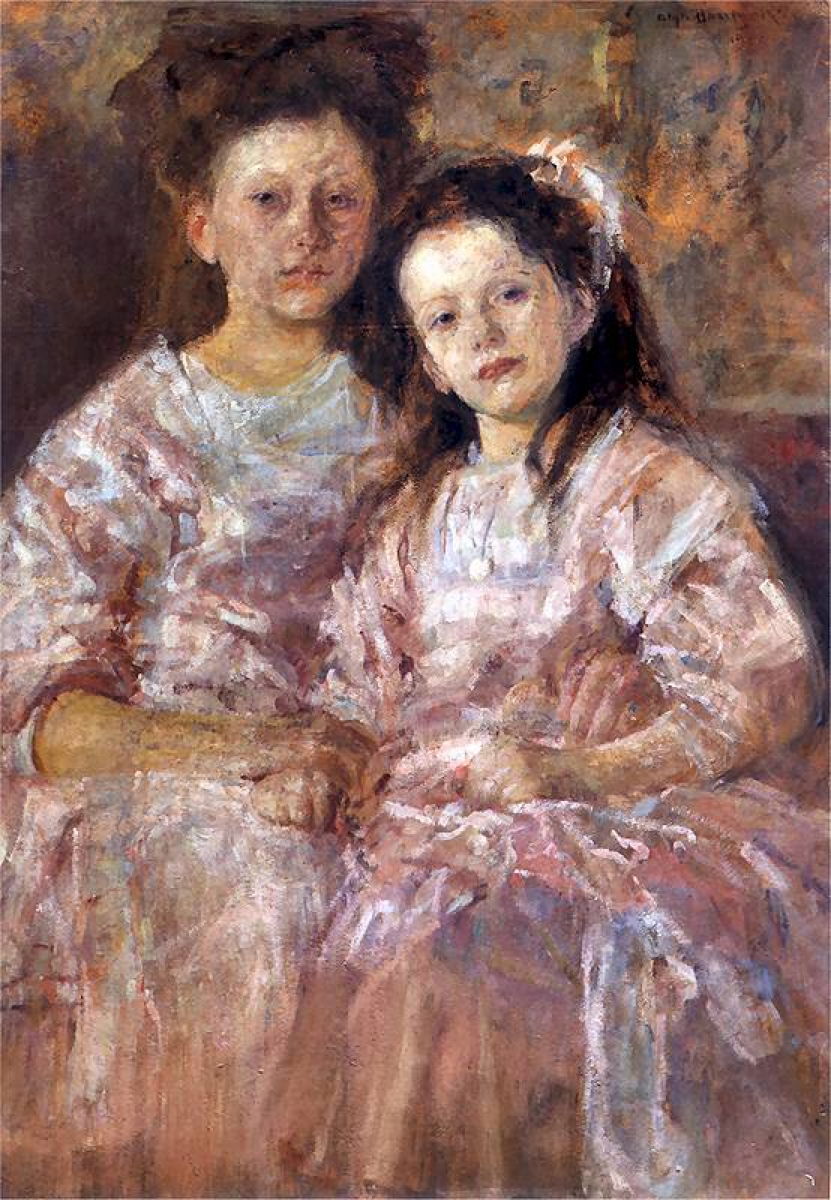In 1898, the Polish post-Impressionist painter Olga Boznańska (1865–1940) moved from Munich, where she had trained, to live the remainder of her life in Paris.

Like most women painters, her portraits of children, with and without mothers, are particularly successful and appealing. Portrait of Two Children on the Stairs (1898) shows siblings dressed in matching smocks, sat on a staircase.

The Nanny (1899) captures the special relationship between a surrogate mother and her infant.

By the last years of the old century, Boznańska’s painting was becoming more ethereal, with vagueness of form. Rather than disintegrating, they look as if they are gradually coalescing from their constituent brushstrokes. In Hôtel des Invalides in Paris (1899) the unmistakable structure of this building in Paris is in the process of materialising, as if in a dawn mist.
In 1901, her work was exhibited for the first time in North America, at the Carnegie Institute in Pittsburgh, PA. She had further paintings exhibited there in 1906, 1907, and from 1920-28.

Maternity (1902) is an intimate portrait of the bond between a mother and her young child.

Boznańska’s later portraits are de-materialised even further, as shown in this Portrait of Miss Dygat (1903).

Theme from Paris (1903) shows some of the construction work which was taking place on the banks of the River Seine at the time.

Place de Ternes in Paris (1903) is a small oil sketch of a corner in the city.
In 1905, she was awarded the gold medal at the international exhibition in Munich.

Interior of the artist’s studio in Krakow (1906) is, I think, among the finest of her later paintings.

Portrait of Helena and Władysława Chmielarczykówien (1906) shows these two sisters.
In 1912, Boznańska was admitted to the Legion of Honour in recognition of her artistic achievements.

Studio Interior (1913).

Toward the end of the 1910s, Boznańska painted a series of quite radical still lifes featuring Japanese objects, such as this Still Life with White Flowers and a Japanese Doll (1919).

Portrait of the Painter Francis Thomasson (1925). I have been unable to discover anything about Francis Thomasson, whose life and art now appears obscure.

Portrait of Miss Irena Stokowska (1936).
In 1939, Boznańska was awarded the Grand Prix at the Expo in Paris.
Boznańska remained in the city of Paris when it was occupied by German forces in the Second World War, and died there in 1940, at the age of 75.
Today her works are almost confined to public and private collections in Poland, although the Musée d’Orsay has at least one of her paintings. She doesn’t appear to have had a substantial exhibition outside Poland since her death.

